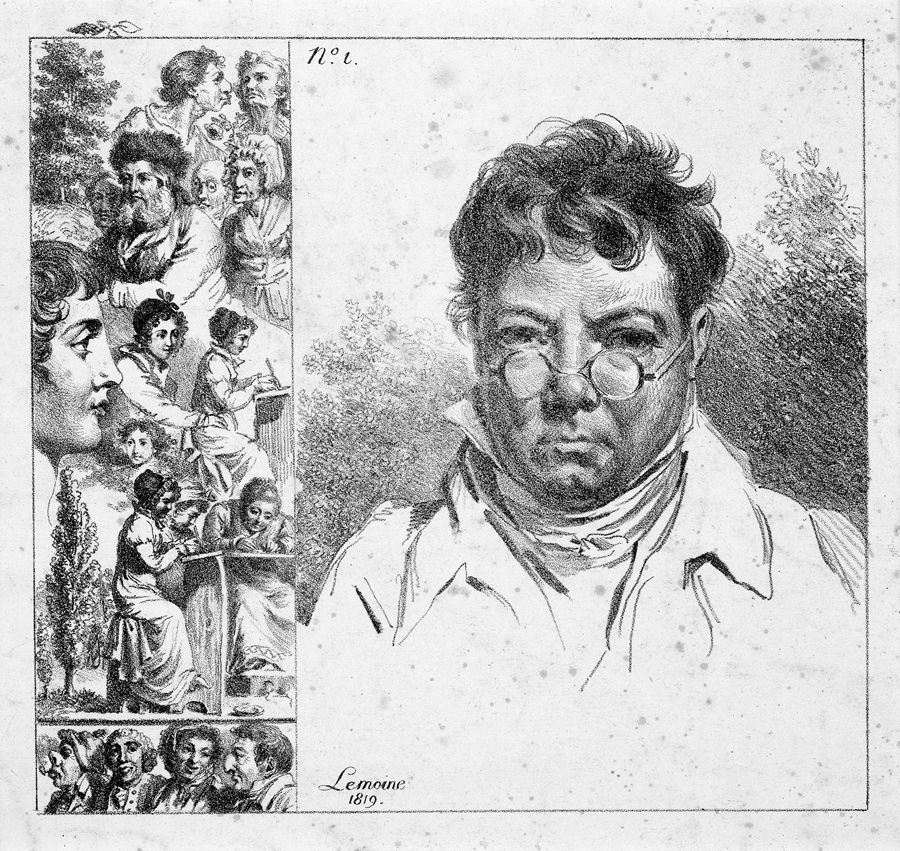Loading the page ...
Jacques Antoine Marie Lemoine
(1751 Rouen – 1824 Paris)
Autoportrait accompagné d’autres têtes (Self-Portrait and other Heads). Lithograph on wove paper. 19 x 19.9 cm. 1819. Neil Jeffares, “Jacques-Antoine-Marie Lemoine (1751–1824)”, in Gazette des Beaux-Arts, 6, 133 (1999), p. 125, no. 180.
Although Lemoine, like his father and grandfather before him, was originally destined for the profession of a notary public, he decided at the age of about twenty to devote himself to painting. In 1771 he began his studies at the Académie Royale de dessin in Rouen, where he was trained by Jean-Baptiste Decamps, the director of the Academy. A few years later Lemoine moved to Paris and studied at the École des Beaux-Arts under Jean-Jacques Lagrenée, who recommended him as a pupil to Maurice-Quentin de la Tour. Although there is no proof that he studied under La Tour, a stylistic change did take place in Lemoine’s work around 1777, at which time he was mainly doing portrait drawings and pastels, which suggests a closer acquaintance with La Tour. Round about 1785 Lemoine began a successful career as a painter of miniatures and proved to be very gifted in this field. After the death of his wife the artist probably returned to Rouen, where he was appointed professor of drawing at the École de Marine in 1799. In 1813 Lemoine became intensely preoccupied with painting on porcelain, for which he won great acclaim.
The present, very rare self-portrait not only documents the graphic skills of the mature artist – it is also the only lithograph Lemoine ever made. The date of origin of this print – 1819 – speaks volumes. Not only was this the year that saw the appearance of the first French translation of Aloys Senefelder’s Lehrbuch der Steindruckerey, it was also the year in which the first lithographic hand-press came into use in Rouen, Lemoine’s native city. Whether the self-portrait was printed on this press or in Paris can no longer be ascertained today. The new technique must have appealed to Lemoine, as it was basically a technical development of chalk drawing, in which Lemoine had specialized. The amusing side strip with the têtes d’expression was obviously added to fill up the empty space on the lithographic stone. The Self-Portrait corresponds to a format that was common at the time and was evidently meant to be cut out. The artist must have consulted an earlier drawing for his portrait, since the full face and curly hair look astonishingly youthful for a man of sixty-eight. Only the glasses that have slipped down to the tip of his nose give him a serious, thoughtful appearance.
A very fine impression with full margins. Scattered foxing and surface soiling, minor ageing, otherwise in very good condition.
